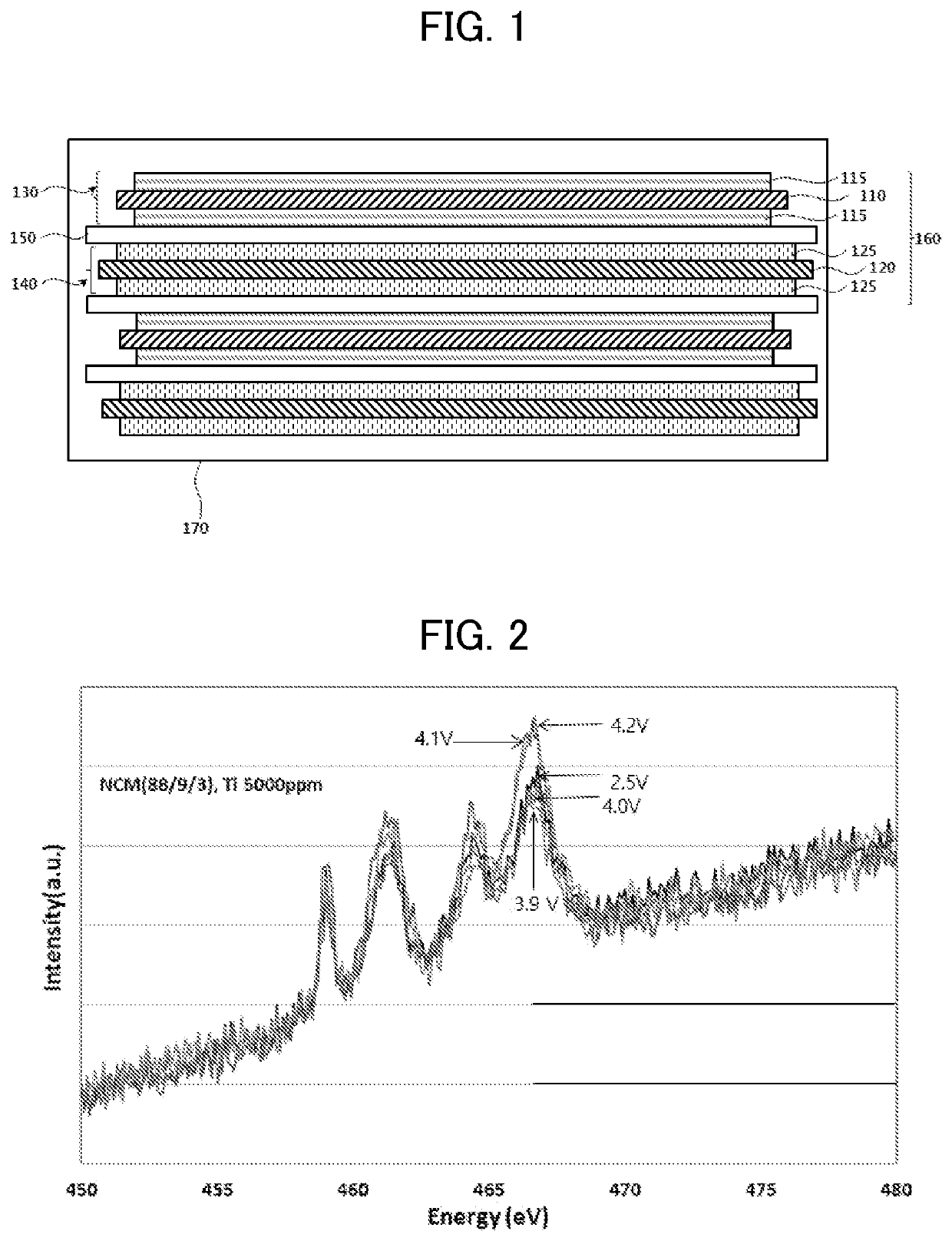Lithium secondary battery
a secondary battery and lithium technology, applied in the field of lithium secondary batteries, can solve the problems of deterioration of life-span and operational stability of batteries, and insufficient stability of cathode active materials
- Summary
- Abstract
- Description
- Claims
- Application Information
AI Technical Summary
Benefits of technology
Problems solved by technology
Method used
Image
Examples
examples
(1) Fabrication of Cathode Active Material
[0106]A precursor aqueous solution was prepared by mixing NiSO4, CoSO4 and MnSO4 in distilled water from which dissolved oxygen was removed by being bubbled with N2 for 24 hours. The precursor aqueous solution was put into a reactor at 50° C. and NaOH and NH3H2O were used as a precipitating agent and a chelating agent, respectively, to perform a co-precipitation reaction for 48 hours so that a nickel-cobalt-manganese hydroxide (a composite metal salt compound) having a particle diameter of about 10 μm to 20 μm was formed. The composite metal salt compound was dried at 80° C. for 12 hours and then re-dried at 110° C. for 12 hours.
[0107]Thereafter, lithium hydroxide was added so that a ratio between the composite metal salt compound and the lithium hydroxide was 1:1.05, followed by uniformly stirring and mixing for 5 minutes. The mixture was placed in a kiln, and the temperature was raised to 710° C. at a heating rate of 2° C. / min, and maintai...
experimental example
(1) Evaluation on Life-Span Property
[0119]The secondary batteries of Examples and Comparative Examples were charged and discharged under the conditions shown in Table 2 below at room temperature to measure a discharge capacity.
[0120]The charge / discharge cycle was repeated 500 times to evaluate a capacity retention rate as a percentage of the value obtained by dividing a discharge capacity at the 500th cycle by a discharge capacity at 1st cycle.
(2) Measurement of Initial Capacity (Coin Half-Cell)
[0121]Coin half-cells using Li foil as an anode and the cathode of Examples and Comparative Examples were prepared, and then charged (CC / CV 0.1 C 4.3V 0.05 C CUT-OFF) and discharged (CC 0.1 C 3.0V CUT-OFF) by one cycle to measure an initial discharge capacity (CC: Constant Current, CV: Constant Voltage).
(3) Measurement of Initial Efficiency MEASUREMENT (Coin Half-Cell)
[0122]Charging (CC / CV O.1 C 4.3V 0.05 C CUT-OFF) and discharging (CC O.1 C 3.0V CUT-OFF) were performed once for the coin half...
PUM
| Property | Measurement | Unit |
|---|---|---|
| molar ratio | aaaaa | aaaaa |
| voltage | aaaaa | aaaaa |
| weight | aaaaa | aaaaa |
Abstract
Description
Claims
Application Information
 Login to View More
Login to View More - R&D
- Intellectual Property
- Life Sciences
- Materials
- Tech Scout
- Unparalleled Data Quality
- Higher Quality Content
- 60% Fewer Hallucinations
Browse by: Latest US Patents, China's latest patents, Technical Efficacy Thesaurus, Application Domain, Technology Topic, Popular Technical Reports.
© 2025 PatSnap. All rights reserved.Legal|Privacy policy|Modern Slavery Act Transparency Statement|Sitemap|About US| Contact US: help@patsnap.com

